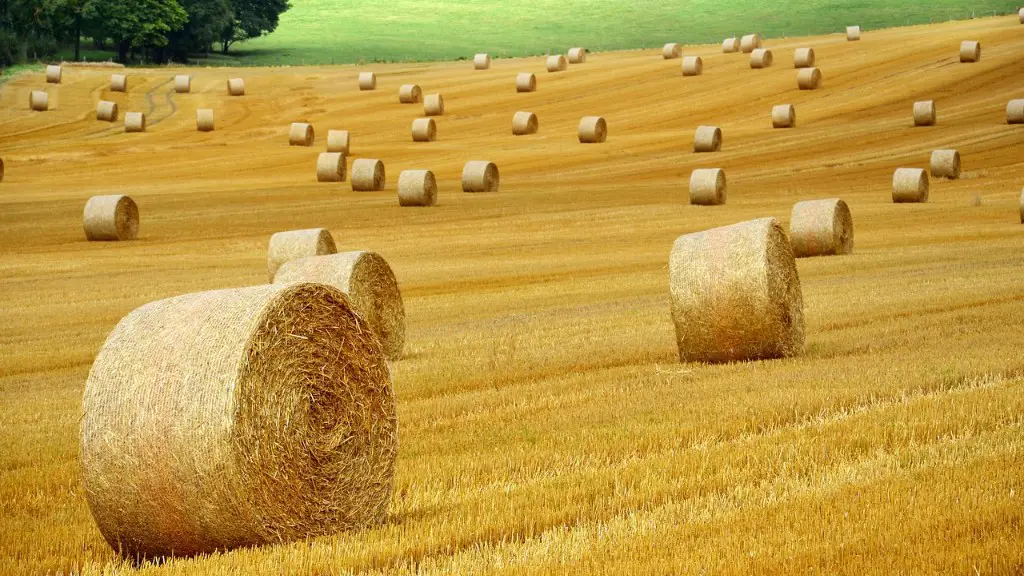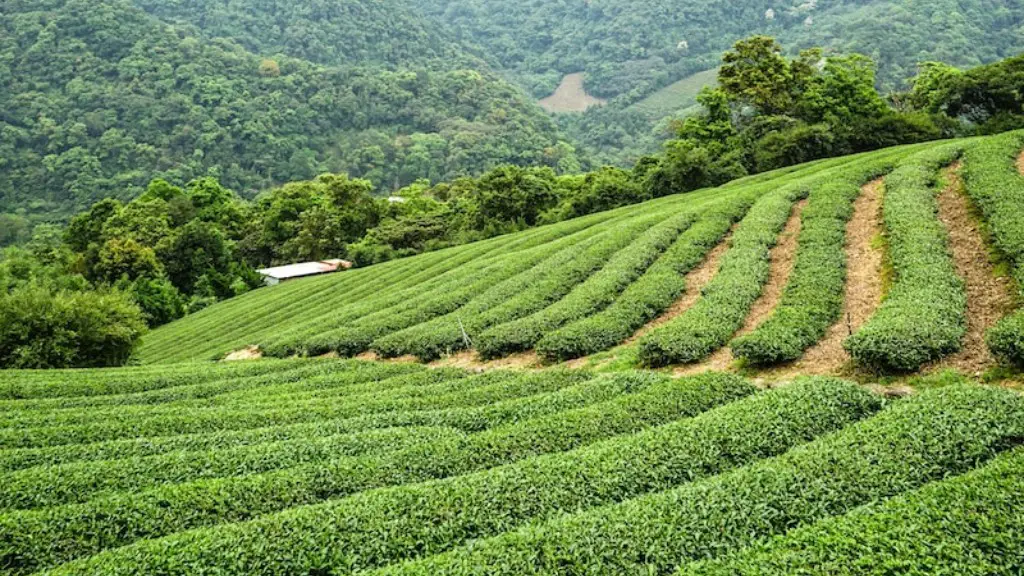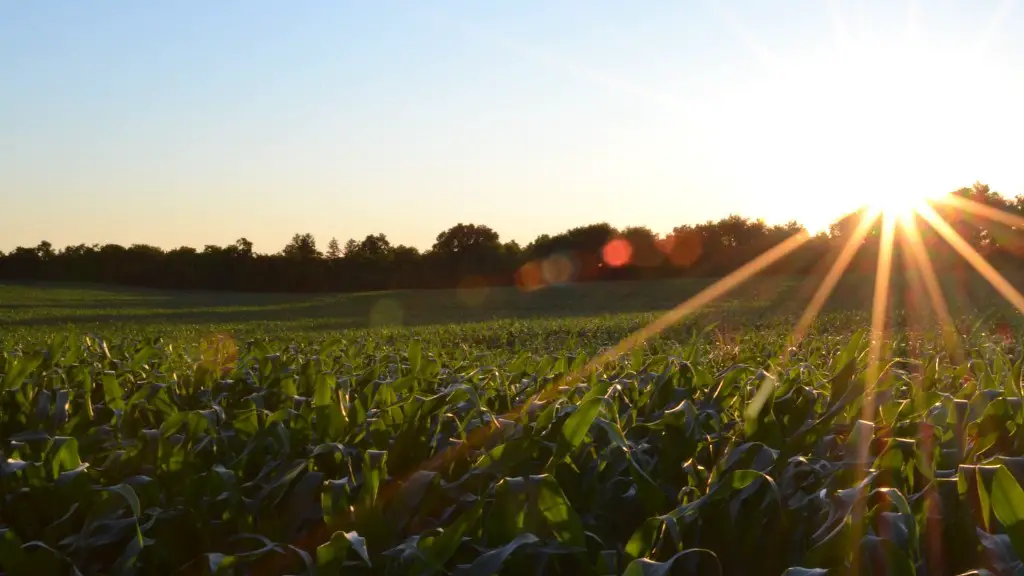Greenhouse gases are a major contributor to climate change, and agriculture is one of the leading sources of these emissions. In fact, agriculture is responsible for about 10% of all human-caused greenhouse gas emissions, with livestock accounting for the lion’s share. Cows, in particular, are a major source of methane, a potent greenhouse gas. But agriculture doesn’t just produce greenhouse gases – it also plays a role in their removal from the atmosphere. Plants absorb carbon dioxide, the most common greenhouse gas, as they grow. So, while agriculture contributes to climate change, it also helps to offset it.
Greenhouse gases are gases that trap heat in the atmosphere. Water vapor, carbon dioxide, methane, and ozone are greenhouse gases. Greenhouse gases are important because they help to regulate the Earth’s temperature.
Agriculture is a major source of greenhouse gases. Greenhouse gases are produced by animal agriculture and land-use changes related to agriculture. Animal agriculture produces methane and nitrous oxide, which are both potent greenhouse gases. Land-use changes related to agriculture can also result in greenhouse gas emissions. Deforestation, for example, releases carbon dioxide into the atmosphere.
Where do greenhouse gases come from in agriculture?
Greenhouse gas emissions from agriculture are a significant contributor to climate change. Agriculture is responsible for 11% of global greenhouse gas emissions in 2020, according to the latest report from the Intergovernmental Panel on Climate Change (IPCC). The main sources of agricultural emissions are livestock (such as cows), agricultural soils, and rice production.
Livestock are a major source of agricultural emissions, accounting for around 65% of the sector’s total emissions. Cattle are the biggest offenders, emitting methane gas through their digestive process. Methane is a powerful greenhouse gas, with a global warming potential (GWP) of 28-36 over a 100-year period. This means that one tonne of methane warms the atmosphere 28-36 times more than one tonne of carbon dioxide over the course of 100 years.
Agricultural soils are another significant source of emissions, accounting for around 24% of the sector’s total. Soil emissions come from two main sources: decomposing organic matter (such as crop residues) and fertiliser use. Decomposing organic matter emits carbon dioxide and other greenhouse gases, while fertiliser use can release nitrogen oxides (NOx) – a group of gases that includes nitrous oxide (N2O). N2
Agricultural greenhouse gases (GHGs) refer to the emissions of gases that contribute to the greenhouse effect from agricultural production. The three main agricultural GHGs are carbon dioxide (CO2), methane (CH4), and nitrous oxide (N2O).
CO2 is the dominant agricultural GHG, accounting for approximately 60% of total agricultural GHG emissions. The main sources of agricultural CO2 emissions are tropical deforestation and the burning of crop residues.
Methane is the second-most important agricultural GHG, accounting for approximately 30% of total agricultural GHG emissions. The main sources of agricultural methane emissions are livestock (e.g., cows, pigs, and sheep) and rice production.
Nitrous oxide is the third-most important agricultural GHG, accounting for approximately 10% of total agricultural GHG emissions. The main sources of agricultural nitrous oxide emissions are fertilizer use and the burning of crop residues.
Agriculture is responsible for approximately half of global methane emissions and approximately one-quarter of global nitrous oxide emissions. Therefore, reducing agricultural GHG emissions is a key part of mitigating climate change.
What causes agricultural emissions
The majority of agricultural production emissions come from raising livestock. More than 70 billion animals are raised annually for human consumption. The biggest single source is methane from cow burps and manure. Other significant sources include nitrous oxide from manure, and carbon dioxide from deforestation, land clearing, and burning fossil fuels.
Agricultural products that are not food items, such as cotton, wool, leather, rubber, and biofuels, are not included in the estimate of 33% global emissions contribution. A separate estimate which includes these non-food products puts the agricultural emissions contribution at closer to 50%.
How does agriculture cause global warming?
Carbon dioxide originates from the burning of fossil fuel, used to power agricultural machinery. However, these direct emissions from agriculture are comparatively small, only making up about 1% of global, human-induced emissions.
Agriculture is responsible for a significant portion of global greenhouse gas emissions, both through direct emissions from crops and livestock, as well as indirect emissions from the conversion of natural ecosystems to agricultural land.
There are a number of ways to reduce the emissions intensity of agriculture, including improving efficiency, changing management practices, and developing new technologies. Some of these approaches are already being implemented successfully on a small scale, but will need to be scaled up significantly to make a dent in global emissions.
Why does agriculture cause methane?
Methane is a greenhouse gas that is produced and emitted from the decomposition of livestock manure and the organic components in agro- industrial wastewater. Methane has a global warming potential of 25, which means that it is 25 times more potent than carbon dioxide in terms of its ability to trap heat in the atmosphere. Methane is responsible for approximately 5% of global greenhouse gas emissions.
While agriculture can have negative impacts on the environment, it can also have positive impacts. Agricultural practices can help trap greenhouse gases within crops and soils, and can help mitigate flood risks. By adopting these practices, we can help reduce the negative impact of agriculture on the environment.
How can we reduce greenhouse gas emissions from agriculture
Farmers have a large opportunity to help in the fight against climate change. They can do this by growing crops for biofuels, or by installing renewable energy sources such as solar panels or wind turbines. This would help to reduce the amount of greenhouse gases emitted each year, and could make a big difference in the long run.
The energy sector is the biggest source of greenhouse gas emissions, accounting for 756% of the total emissions worldwide. The sector includes the production, transport, and consumption of energy. The most important sources of emissions from the energy sector are:
Fossil fuels: burning coal, oil, and natural gas produces the vast majority of emissions from the energy sector.
Transportation: vehicles powered by fossil fuels are a major source of emissions, especially from the burning of gasoline and diesel.
Electricity generation: power plants that burn fossil fuels (particularly coal) are a significant source of emissions.
Other sources: the industrial use of fossil fuels, such as in the production of cement, steel, and chemicals, also emits greenhouse gases.
Reducing emissions from the energy sector will require a major shift away from fossil fuels and toward cleaner energy sources, such as renewable energy and efficiency.
Though all three of these gases are important in the greenhouse effect, methane and nitrous oxide are far more potent than carbon dioxide in terms of their ability to trap heat in the atmosphere. Therefore, though all three should be addressed, methane and nitrous oxide should be the primary focus in terms of reducing agricultural greenhouse gases.
It is due to two different factors that cattle naturally emit more methane while digesting grass. The first factor is that cattle have a four-chamber stomach that ferments grass rather than breaking it down like other plants. The second factor is that because grass-fed cattle reach market weight more slowly than feedlot cattle, they tend to emit methane over a longer time period.
What is the biggest source of methane emissions from agriculture
Livestock are a significant source of methane emissions worldwide. A single cow can make up to 99 kg of methane gas per year, which contributes to climate change.
The study found that the average person who ate a meat-based diet produced about 17.5 percent more greenhouse gases each day than someone who ate a vegetarian diet. A vegan diet, which excludes all animal products, resulted in about 29 percent fewer emissions than a meat-based diet.
The study authors say that the findings highlight the potential for reducing dietary greenhouse gas emissions by consuming less meat and animal products.
Is agriculture worst for climate change?
Factory farming is one of the main contributors to climate change, releasing vast quantities of greenhouse gases into the atmosphere. These gases trap heat and contribute to the warming of the planet, which can lead to extreme weather conditions and devastating floods and droughts. Factory farming also destroys natural habitats, which further amplifies the problem.
It’s time to take action on climate change, and that means drastically reducing our reliance on factory farming. We need to move towards more sustainable and environmentally friendly farming practices that don’t put our planet at risk.
Smoke, silt, ash, and soil dust from agricultural activities like slash and burn agriculture, tillage, transporting, and harvest, contaminate the air with particulate matter. This can lead to serious air pollution problems, including respiratory illness, heart disease, and cancer.
How much pollution is caused by agriculture
Farms in the United States produce 90 percent of the airborne ammonia pollution. This pollution comes from the use of fertilizers and livestock manure. This pollution is harmful to the environment and human health.
According to the latest data, China was the biggest emitter of carbon dioxide (CO₂) emissions in 2021, accounting for nearly 31 percent of the global emissions. The world’s top five largest polluters were responsible for roughly 60 percent of global CO₂ emissions in 2021.
China’s emissions have been on the rise in recent years, due in part to the country’s growing economy and reliance on coal-fired power plants. However, China has also been working to reduce its emissions, and it has made progress in transitioning to cleaner energy sources.
Despite China’s efforts, the country’s emissions are still far above those of other countries. The United States, the second-largest emitter of CO₂, emitted about 15 percent of the world’s total in 2021. India, the third-largest emitter, emitted about 7 percent.
To address the problem of global warming, it is essential that all countries work to reduce their emissions. However, as the world’s largest emitter, China bears a particular responsibility to lead the way.
Conclusion
Greenhouse gases emitted from agriculture come from a variety of sources. These include livestock, like cows and pigs, as well as rice paddies and other agricultural production. Greenhouse gases from agriculture contribute to climate change by trapping heat in the atmosphere and causing the Earth to warm.
Greenhouse gas emissions from agriculture are due to a variety of sources, including livestock, manure, field burning, and fertilizer use. Agricultural activities account for about 10% of total U.S. greenhouse gas emissions. Reducing emissions from agriculture will require a comprehensive approach that includes changing management practices, developing new technologies, and reducing demand for agricultural products.





